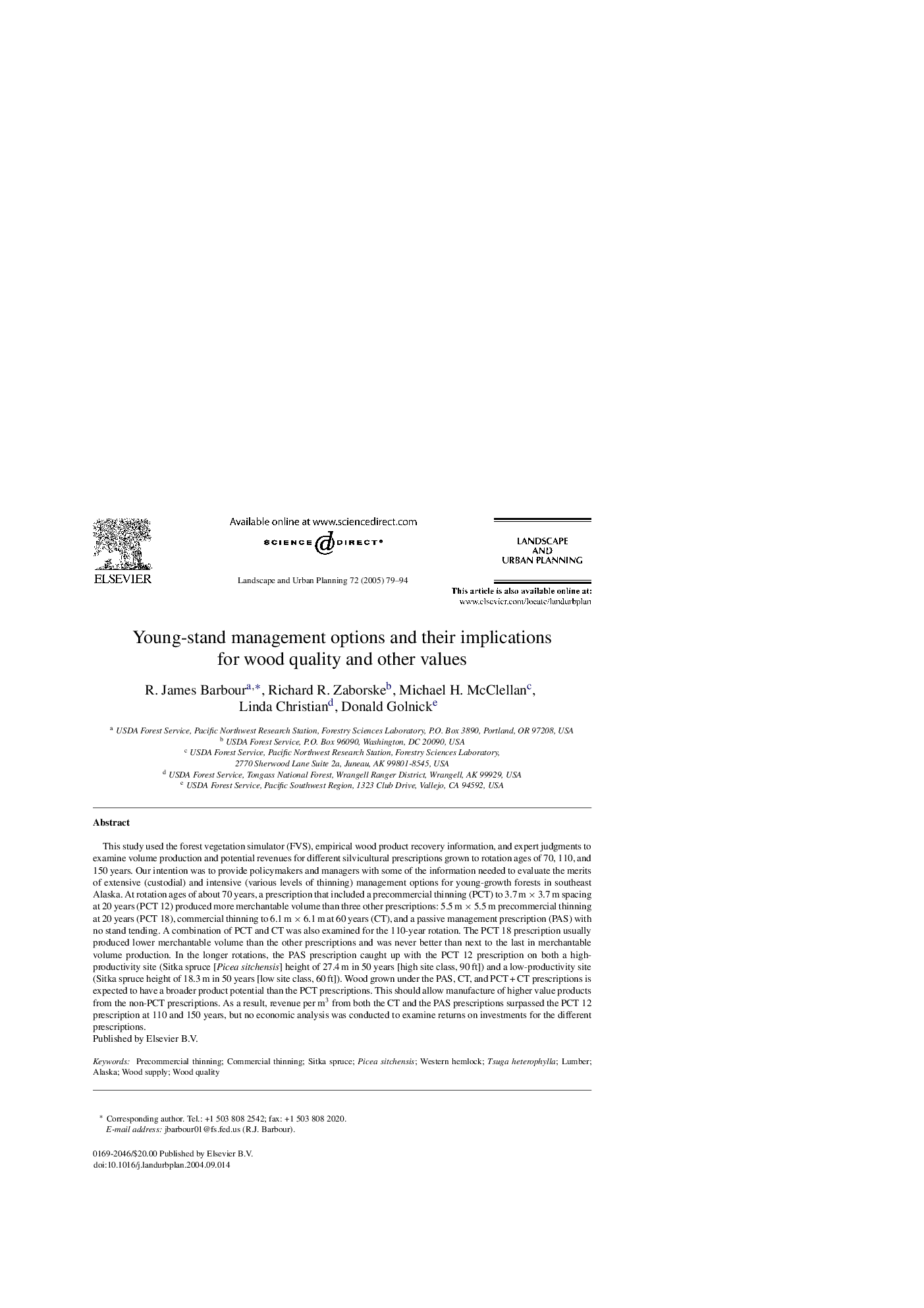| کد مقاله | کد نشریه | سال انتشار | مقاله انگلیسی | نسخه تمام متن |
|---|---|---|---|---|
| 9736075 | 1484682 | 2005 | 16 صفحه PDF | دانلود رایگان |
عنوان انگلیسی مقاله ISI
Young-stand management options and their implications for wood quality and other values
دانلود مقاله + سفارش ترجمه
دانلود مقاله ISI انگلیسی
رایگان برای ایرانیان
کلمات کلیدی
موضوعات مرتبط
علوم زیستی و بیوفناوری
علوم کشاورزی و بیولوژیک
بوم شناسی، تکامل، رفتار و سامانه شناسی
پیش نمایش صفحه اول مقاله

چکیده انگلیسی
This study used the forest vegetation simulator (FVS), empirical wood product recovery information, and expert judgments to examine volume production and potential revenues for different silvicultural prescriptions grown to rotation ages of 70, 110, and 150 years. Our intention was to provide policymakers and managers with some of the information needed to evaluate the merits of extensive (custodial) and intensive (various levels of thinning) management options for young-growth forests in southeast Alaska. At rotation ages of about 70 years, a prescription that included a precommercial thinning (PCT) to 3.7 m à 3.7 m spacing at 20 years (PCT 12) produced more merchantable volume than three other prescriptions: 5.5 m à 5.5 m precommercial thinning at 20 years (PCT 18), commercial thinning to 6.1 m à 6.1 m at 60 years (CT), and a passive management prescription (PAS) with no stand tending. A combination of PCT and CT was also examined for the 110-year rotation. The PCT 18 prescription usually produced lower merchantable volume than the other prescriptions and was never better than next to the last in merchantable volume production. In the longer rotations, the PAS prescription caught up with the PCT 12 prescription on both a high-productivity site (Sitka spruce [Picea sitchensis] height of 27.4 m in 50 years [high site class, 90 ft]) and a low-productivity site (Sitka spruce height of 18.3 m in 50 years [low site class, 60 ft]). Wood grown under the PAS, CT, and PCT + CT prescriptions is expected to have a broader product potential than the PCT prescriptions. This should allow manufacture of higher value products from the non-PCT prescriptions. As a result, revenue per m3 from both the CT and the PAS prescriptions surpassed the PCT 12 prescription at 110 and 150 years, but no economic analysis was conducted to examine returns on investments for the different prescriptions.
ناشر
Database: Elsevier - ScienceDirect (ساینس دایرکت)
Journal: Landscape and Urban Planning - Volume 72, Issues 1â3, 30 April 2005, Pages 79-94
Journal: Landscape and Urban Planning - Volume 72, Issues 1â3, 30 April 2005, Pages 79-94
نویسندگان
R. James Barbour, Richard R. Zaborske, Michael H. McClellan, Linda Christian, Donald Golnick,